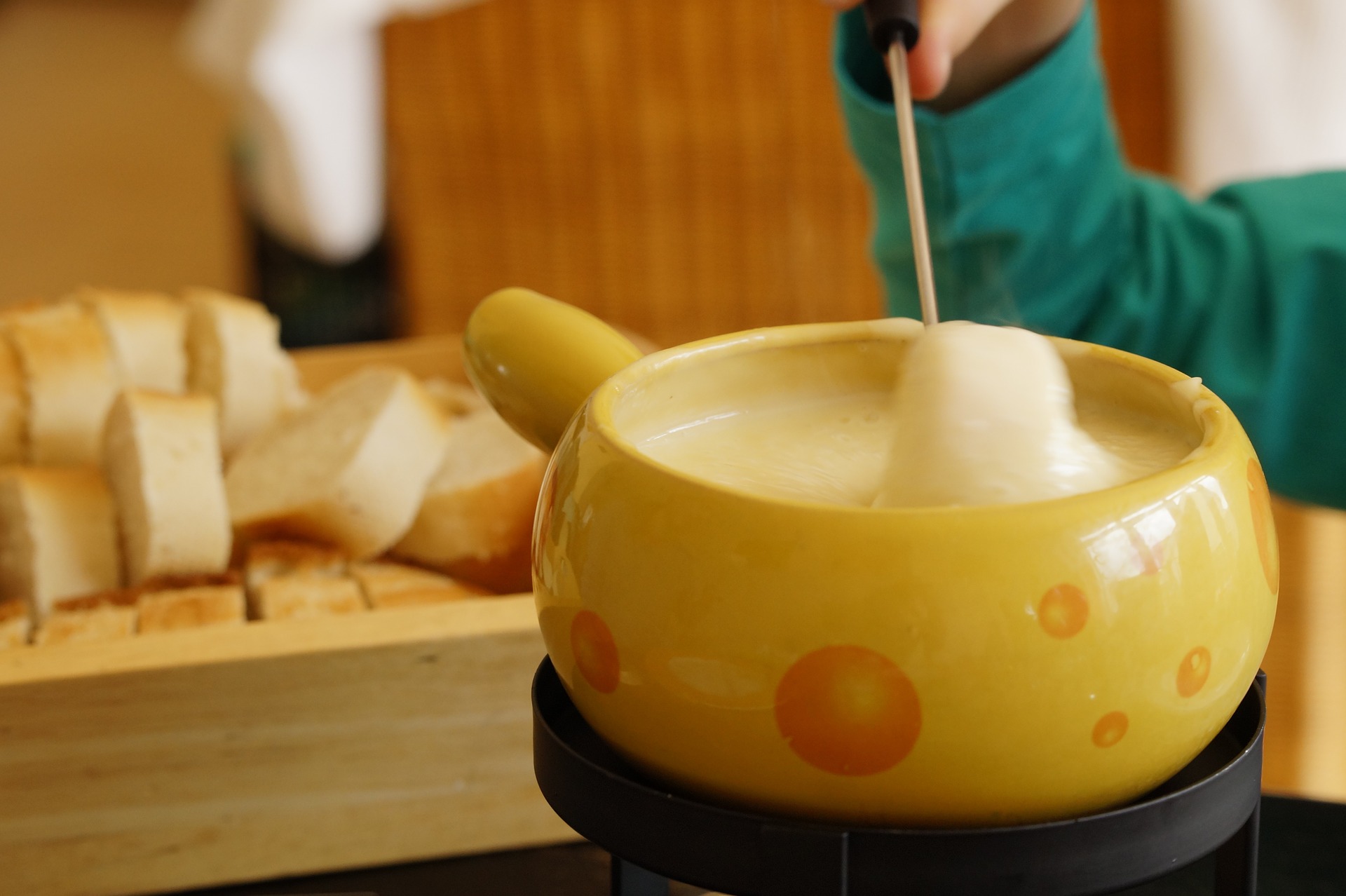I remember eating fondue often for dinner as a kid, but I feel like it has really gone by the wayside. I haven’t eaten it in years, never think to serve it at home, and I never come across recipes on Pinterest.
The Melting Pot restaurant, which I have never been to, seems to be the only one trying to bring this iconic dish back.
Let’s find out where fondue came from.
Definition: a saucelike dish of Swiss origin made with melted cheese and seasonings together with dry white wine, usually flavored with kirsch: served as a hot dip for pieces of bread; a dish of hot liquid in which small pieces of food are cooked or dipped; a baked soufflelike dish usually containing cheese and cracker crumbs or breadcrumbs.
First, we’ll look at a timeline breakdown over the years of the primary fondue – cheese – then we’ll take a quick glance at meat and chocolate.
Fondue comes from the French word “fondre” meaning “to melt.” The dish usually has two varieties of melted cheese – typically Gruyere and Emmental – and is served in a communal pot called a “caquelon.”
Often flour, a dry white wine, and a tiny bit of nutmeg is added. Long forks are used by diners to dip partially stale bread into the cheese mixture. The caquelon is usually made of a heavy earthenware or iron, and is meant to distribute heat evenly.
Fondue was first mentioned in Homer’s Iliad around 800 BC – it was described as a “mixture of goat’s cheese, wine, and flour.”
Recipes for fondue were printed as early as the late 1600s. According to WiseGeek.com, these recipes were attributed to regions independent of both Switzerland and France, but later became a part of Switzerland. Some of these recipes included eggs that were scrambled – a sort of souffle fondue, which is not fondue as we think of it today.
In the 1700s, in Switzerland, peasant families began eating aged bread and cheeses together as a wintertime food, when fresh foods were not available. As these two food items aged they became more difficult to consume.
But, it was found if you heated up the cheese, added wine, garlic, and herbs, you could dip stale bread into the flavorful mixture – this was the beginning of modern fondue.
In the late 1700s, an early food writer, Jean-Anthelme Brillat-Savarin, is said to have introduced the dish to America – he fled there from France in lieu of the revolution. He reportedly wrote three cookbooks that included fondue au fromage – slightly different from the Swiss fondue because it included butter and cream.
In 1927, a fondue recipe resembling today’s dish was published in Madame Saint Agne’s French cookbook, La Bonne Cuisine. Notice this is a French cookbook, not Swiss.
As mentioned before, fondue has primarily Swiss and French origins. However, other cultures may have inspired this dish as well: tableside cooking has been common in Asian countries for a long time; similarly, Mexico and Spain can take credit for melted cheese recipes.
In 1930, the Swiss Cheese Union of Switzerland declared fondue the country’s national dish.
Finally, (modern) fondue started to come to America with the end of World War II in 1945. Soldiers returning from Europe longed for the cheesy dish they ate abroad.
Wealthy folks traveled to Switzerland for skiing vacations, and legend has it that someone brought back their love for fondue. From there, it appeared in restaurants and on dinner tables in America.
From the 1950s through the 1970s fondue parties became very popular in our country. Fondue fame dipped down during the 1980s through the mid 1990s; the late ’90s and early 2000s saw a small comeback.
Now that we’re well past our first decade of the 2000s, I think it’s safe to say fondue still has yet to make a serious comeback, but I do hope that it does. The act of sharing one dish for everyone has a real sense of camaraderie and family to it that you just don’t get at a typical dinner party.
When it comes to meat fondue, that dish has its origins in the Burgundy area of France via the Middle Ages. Field workers in vineyards were unable to stop working for a proper lunch break, and so someone brought out a hot pot of oil to be used by everyone. The grape harvesters were able to come by and cook pieces of meat in the pot as they had a few moments to do so.
In 1952, Chef Konrad Egli of New York’s Chalet Swiss Restaurant made meat fondue popular, right around the same time cheese fondue was gaining recognition in the US.
Similarily, chocolate fondue came about a little over a decade later, in 1964, likely as a spin off of the growing-in-popularity cheese fondue. What better way to end your fondue dinner party than with dipping fruits or cookies in chocolate?

Comments
One response to “Food history: fondue”
As someone who regularly eats fondue, I had no idea about the history or origins except for its association with Switzerland. I really learned a lot from this article. Thanks for posting!